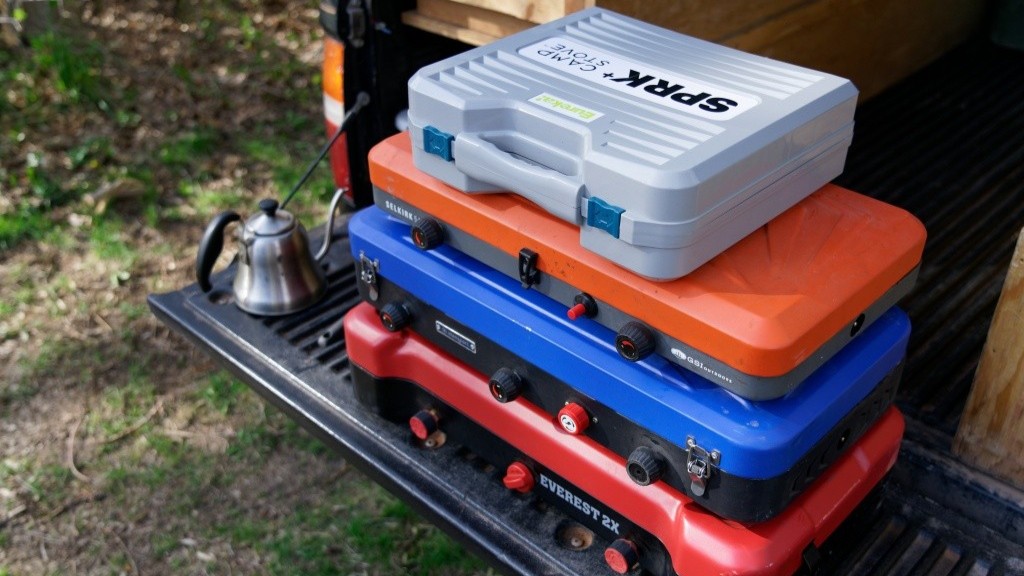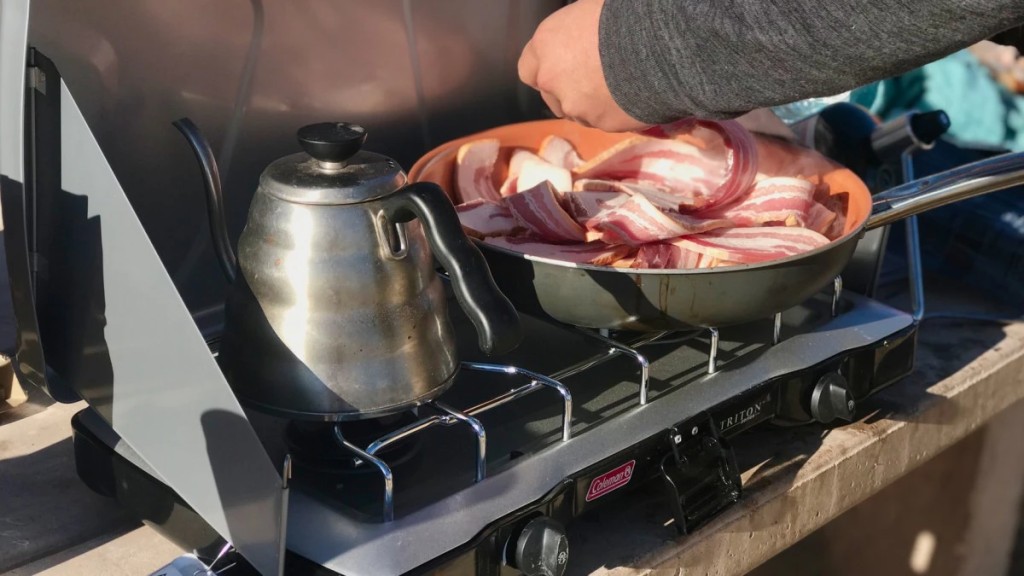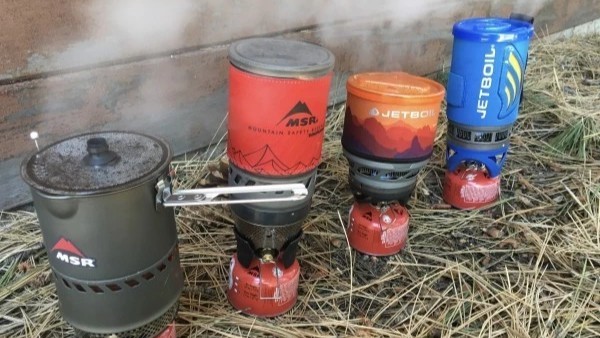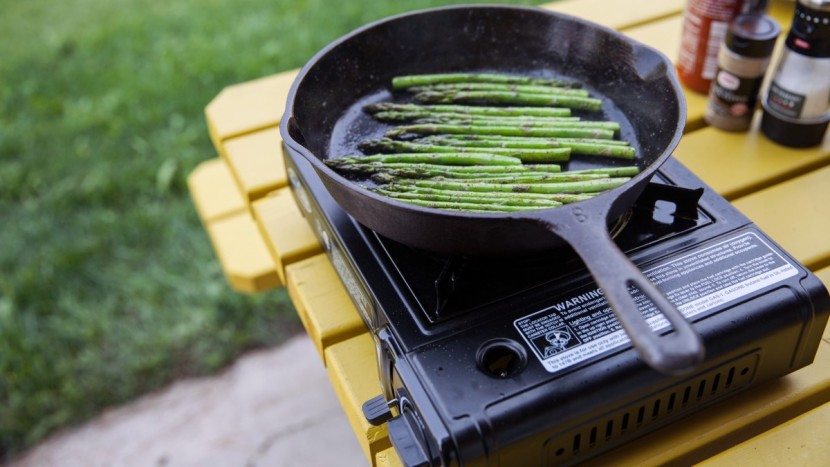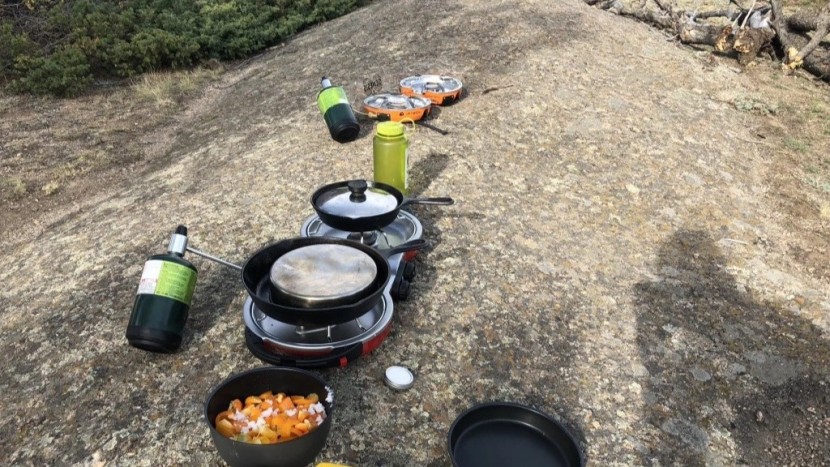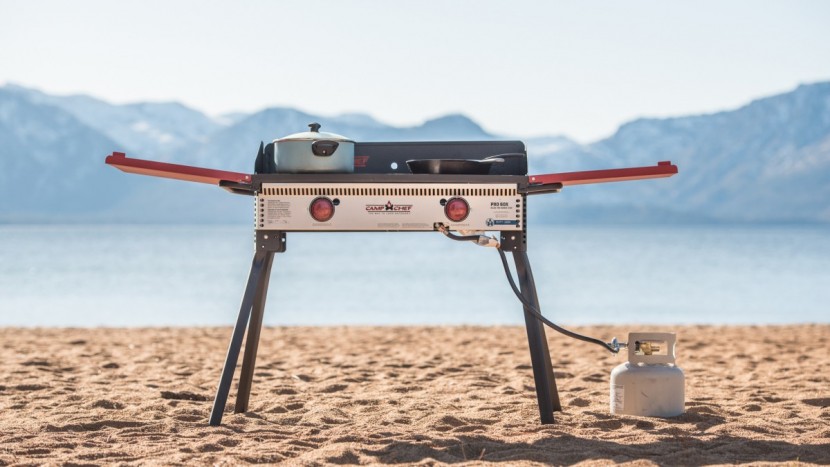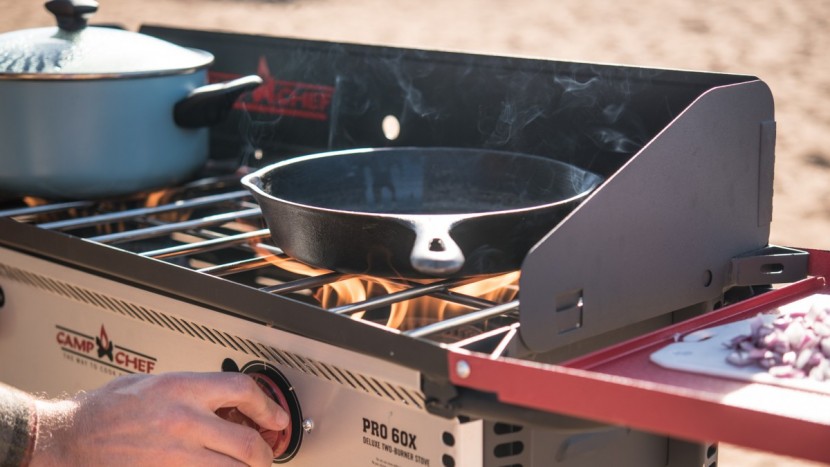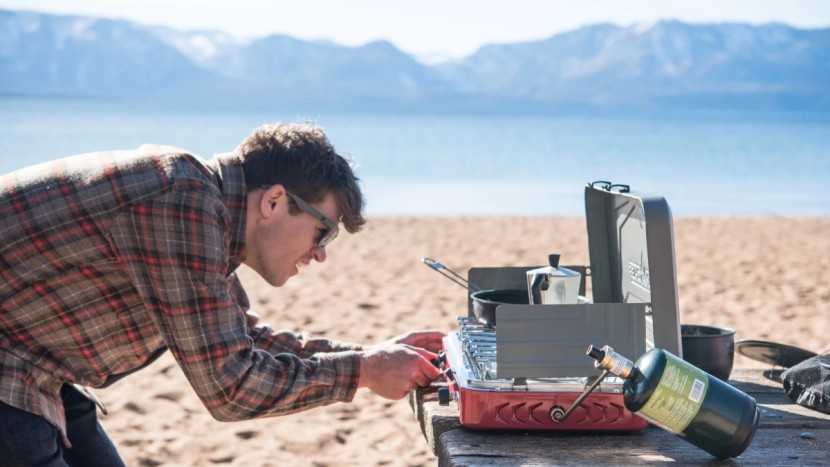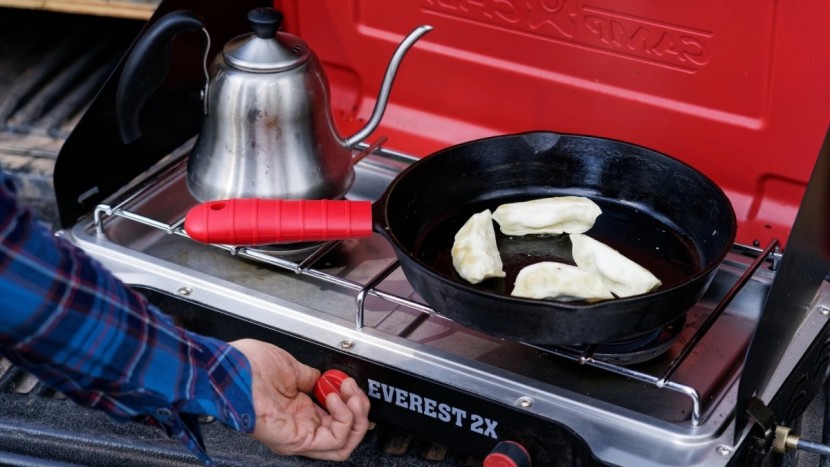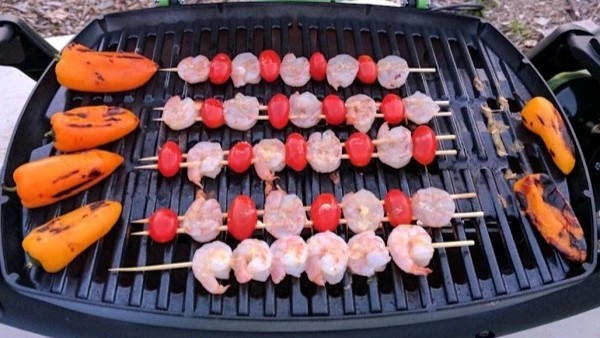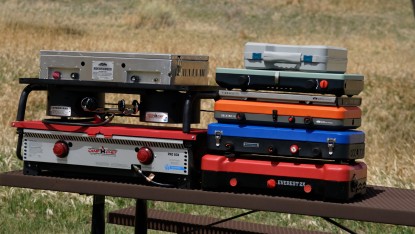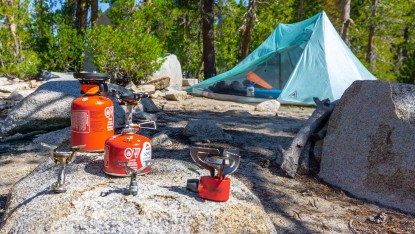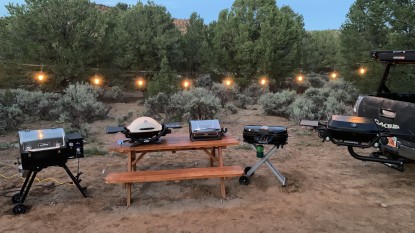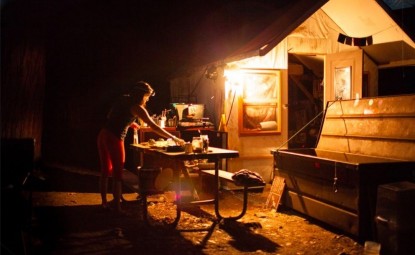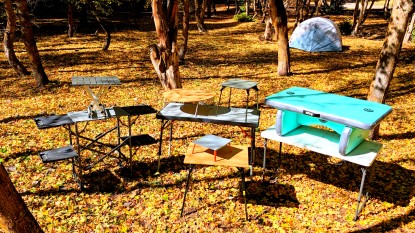Whether getting back to camp after a long day of adventuring or relaxing in nature for the weekend with friends, mealtime is an important and necessary part of the process. Having the right tools for the job can mean the difference between a tedious chore and a raging good time. With so much camp kitchen equipment on the market, how do you know what is best for you and your crew? Well, you've come to the right place. Foodies and ramen junkies alike can benefit from our extensive testing process and articles. Read on to learn why you would want a camping stove and some tips to help you choose the right one. We discuss what is essential and what is not, as well as the size, design, style, and features ideal for different cooking styles and applications.
Camping Stove or Backpacking Stove?
Whether or not you want a car camping stove will depend on the proximity between your car and your backcountry kitchen. If you plan to cook near your car, then a camping stove is the way to go, hence why we call it car camping. If you plan to cook meals a quarter mile or more from your vehicle or if you plan to bikepack or travel with your stove, then a backpacking stove is the better option.
Next up, you will want to consider how much space you have for storing a stove, as well as any weight limitations you may have. Car camping stoves tend to be heavy and awkward to carry very far from your vehicle (at least compared to backpacking stoves). Most of them are relatively large (ranging from compact to outright ginormous!) and function similarly to the stove in your home kitchen. This means you can cook multi-pot feasts that are more complicated than a freeze-dried backpacker meal. Further, car-camping stoves can accommodate standard kitchen cookware — like cast irons and woks — and are made from more durable materials.
On the other end, backpacking stoves are lightweight, compact (often smaller than your fist), and more fuel-efficient. Some backpacking stoves do little more than boil water, while others can accommodate a pot or pan for cooking a one-pot meal. Simmering with a backpacking stove requires some finesse - if it is even possible - and nearly all backpacking stoves are top-heavy, demanding some forethought to avoid spilling your dinner on the ground.
As with most outdoor gear, durability and weight are often a tradeoff. Backpacking stoves are lightweight and less durable than their bomb-proof car camping counterparts, usually made from steel. Some backpacking stoves are made with more delicate materials — such as aluminum — while other companies make them from titanium, which is much more durable. While some backpacking models are more fragile than your average car-camping stove, they can be an excellent tool for car camping. These stoves can be the most fuel-efficient means to boil water, especially if you need burner space for scrambling eggs and frying potatoes. When we car camp, we like to bring a backpacking stove to make coffee in the morning, while the more giant stove is busy with breakfast.
What Size Camping Stove Should You Buy?
The first couple of questions to consider when narrowing down what type of stove to buy is the number of people you plan to feed and whether you prefer a tabletop or freestanding stove. There are two designs of camping stoves to choose from: compact tabletop models with 1-3 burners and large freestanding stoves with their own legs and 2-3 burners. Tabletop models work best on a table or tailgate (unless you don't mind kneeling on the ground). Compared to freestanding models, these stoves have less cooking area, so you may need smaller pots and pans. Freestanding models stand on their own legs but can also be on a tailgate or table. They feature more cooking space and wide burners, so if you plan to make meals in a giant stockpot or wok for every meal, this is the ideal type of stove for you. Be forewarned: freestanding stoves are heavier and more awkward to move around, and they take up much more space in your rig. Many people use freestanding stoves to cook for large groups during fieldwork or field school or as a permanent outdoor kitchen for deep-frying, beer making, or canning. Regarding car camping, most folks will prefer a tabletop model. They're easier to transport and almost always have superior wind resistance.
Groups of 4 or Less
If you have a group of four or fewer people and are camping for a few days, a compact stove is a great choice. They are lightweight, fit easily in the car, and provide good cooking power for a small group. When choosing a compact stove, pay attention to the cooking dimensions. You'll want enough cooking space to fit your preferred pot and pan set. Some two-burner stoves we tested could only fit one 12" skillet with little room left on the second burner for anything more than a tiny pot. Others could only fit a 12" skillet by removing the side wind flaps. A few could fit two 12" skillets. Pay attention to the reported dimensions to determine if a stove has enough cooking space, and also consider the size and placement of the burners when assessing the usable cooking surface.
Groups of 5-7
When cooking for mid-sized groups of 5-7 people, choosing the right cooking equipment can be challenging. To start, consider your cooking needs and the typical length of your trips. One option is to focus on the available cooking space in tabletop models and select one with a larger cooking area. The broader cooking areas can accommodate larger pots or pans for bigger groups. To enhance the functionality of your two-burner stove, consider adding a single-burner stove or having a couple of small folding two-burners available. This will provide more flexibility and allow two or more people to cook simultaneously. A two- or three-burner freestanding model can also offer ample power and space but may only be worth assembling and transporting if you cook for a large group or stay in the same location for multiple days. The choice depends on your cooking preferences and how many folks in your posse plan to assist with cooking.
Groups of 8+
If you have a group of eight or more people, you will need more cooking space and more than two burners. You can choose a large three-burner freestanding model with legs or multiple compact two-burner models. Another option is to pair a sizeable freestanding two-burner with a tabletop model of your choice. We recommend the freestanding option as it expands your kitchen and doesn't take up precious tabletop space. Some options feature fold-out side prep tables, which provide counter space – this is especially valuable if your campsite doesn't have a picnic table.
Remember that larger products require more energy to pack, assemble, and maintain. However, they are great if you have a large group and must conserve your tablespace. If prep space isn't an issue, two of your favorite compact camping stoves could be an equally powerful but more mobile option.
BTUs & Power
BTUs, or British Thermal Units, are the energy required to heat or cool one pound of water by one degree Fahrenheit. It is a measure of power. Theoretically, the more BTUs a camping stove has, the more heat it should generate. In practice, it is more complex. Beyond BTUs, the overall design of the stove body, the placement and size of its burners, and its ability to resist the wind are significant factors in determining the true strength of a stove's output.
Case in point: in our boil test, a stove with two 20,000 BTU burners beat another model with 30,000 BTU burners. The stove beat out the other because of the more efficiently designed windscreen. You want a model that balances BTUs and an innovative, compact design for maximum efficiency.
Time to Boil
To further narrow down the field of competitors, we suggest looking at each model's performance in our boiling tests. Pretty much all stoves boil water adequately if there is no wind, the temperature is moderate, and you are not in a hurry. Once you add in the wind, cold temperatures, and a big group, water boiling time can become quite an ordeal and might be the difference between a 45-minute breakfast and a two-hour-long breakfast event. As mentioned above, the number of BTUs gives you a general idea of how fast water might boil, but it's not a complete picture. Be sure to note whether the model you're considering comes with a windscreen and how the windscreen is designed. Rectangular windscreens provide better protection than L-shaped windscreens, sheltering the burners on three sides of the stove rather than only one. You will also want to pay attention to the design of the burners themselves. Burners that are wider in diameter, well protected by the stove body, and physically closer to where your cookware sits tend to provide a much more efficient boiling experience.
Simmering & Wind Resistance
Great simmering capability and good wind resistance are sometimes overlooked with camp stoves. Many products we tested boiled water fast enough, but struggled with more sophisticated dishes and windy conditions. When considering whether a given model simmers well, we want a burner that can provide even heat at a low setting and doesn't easily turn off when you finesse the burner down low. Just because you are outside doesn't mean that you have to give up your cooking performance. Bottom line: yes, a quality camping stove can perform as well as your home stove! Do you cook a lot of dishes that require simmering at home? Is risotto your go-to car-camping meal? Then, make sure to prioritize the simmering ability of a camping stove.
Wind resistance is pretty simple: stoves with large rectangular windscreens are better at keeping the wind out. However, the placement of the burners and how well the stove body protects them also make a big difference. These design features can be hard to see in online photos, so we thoroughly test and report on them in our reviews. For most people, wind resistance might not be the most important factor, as you can usually block the wind by placing your stove in a sheltered area at your campsite. However, wind has a way of swirling around in unexpected ways and from all directions, sometimes causing problems even in the most sheltered setups. If you live or camp in a windy area, it's worth investing in a stove with a powerful burner, windscreens that seal tightly for three-way wind protection, and a smart, compact design.
Fuel Types
Most camping stoves use propane, the stuff inside those little green bottles you see at every campsite. Butane is slightly less common (the fuel type used by the one-burners in our review), but it is becoming more normal as the years roll on. We focused primarily on reviewing propane-burning models because this fuel tends to be cheaper, more accessible, and easier to use. Propane ignites instantly, burns cleanly, and doesn't require pressurizing a liquid fuel tank—eliminating the mess during refills. However, liquid fuel does perform better than propane in colder climates, and given that you hand-pressurize white gas fuel tanks, they maintain performance until the fuel is gone. Propane canisters become inefficient when they get close to empty. Butane struggles in cold temps and is also less readily available.
If you decide on a propane model, we recommend getting an adapter and a hose to use a refillable barbecue-style propane tank. Five-gallon or 20-pound tanks are the most common size - however, if you look around, you can find a 5-pound tank that commands much less space. A hose adapter for the regulator enables you to place the propane tank under the table, freeing up valuable cooking space. Refillable tanks also reduce the waste from empty 16-ounce canisters — which can be notoriously difficult to recycle. Big tanks can be exchanged at most gas stations or grocery stores. You can also refill smaller tanks, though you may have to look harder for stores that refill smaller tanks. If you still need some convincing, large refillable tanks can speed up boil times by 10-20 percent compared to 16-ounce propane canisters, and they are much more cost-effective.
If you decide to go with the refillable tank and hose, the next question is which hose adapter to buy. During our testing period, we were continually hooking and unhooking propane tanks. In the end, we decided that all of the adapters performed about the same. What differentiated our favorites from the rest was the stove's ease of setup, which was primarily influenced by the design of the propane tank connector. We suggest a connector that has a generous plastic grip on the five-gallon tank end, sometimes referred to as the Type 1/ACME fitting, such as the Stansport Appliance-to-Bulk-Tank-Hose.
Wood-burning stoves have recently gained in popularity. While these stoves are intriguing, we have not yet decided to include them in our review. They depend on the availability of dry sticks and twigs, which could encourage campers to scavenge forest floors, and these stoves can only be used when there isn't a fire ban. It would be terrible to get somewhere far from home, only to discover you can't use your stove or there is a shortage of dry wood. For now, our reviewers have chosen to stick with mainstream camp stoves, but rest assured: if we change our minds, you'll be the first to know.
Ignition Types
Camp stoves will either require you to light the burners manually with a flame source, or they will come equipped with a Piezo ignition system. Piezo ignitors use piezoelectricity - a pressurized electric charge - to ignite your fuel with a button or flip a lever. They are generally very easy to use and don't require getting your hand close to a flaming burner. However, these ignitors usually add a bit to the price point, and over time, they become less reliable. Piezo ignition or not, you should always have a backup lighter and/or matches when camping.
Accessories & Hybrids
There are a plethora of accessories available for your camp kitchen setup. Supplemental griddles, grill plates, pizza ovens, and more can be a lot of fun if you want to mix it up or get fancy. There are hybrid models that offer combos, such as a regular burner on one side and a grill or griddle on the other. While this can be fun in theory, in practice, it can be rather limiting. Unless you plan to grill or use a griddle for every outing, it's better to bring a quality cast iron grill/griddle plate to convert your two-burner stove to a full-width grilling surface when it suits you. Rather than being locked into a hybrid single-burner/griddle-combo, you can simply place the grill/griddle plate over both burners to create a large surface. This option is great for grilling steaks or cooking a monumental stack of pancakes for all your friends. If you are grilling for larger groups regularly, then consider adding a top-ranked portable grill, which performs better than a grill stove.
Eco-Conscious Options
Hate the waste from all those 16-ounce green propane canisters? We sure do! The Sierra Club estimates that 60-million of these canisters are made each year, and most of them end up in the landfill. They shouldn't be there because they are considered hazardous waste in many places (mainly because they are a fire hazard), and yet it isn't easy to recycle them for this same reason. Most people don't know what to do with them, so they end up piled high in garages or, worse, abandoned in nature. We realize these canisters are often the best option, so we ask that you take the time to find a proper recycling facility in your area to dispose of empties when you have them.
Car camping stoves can be fitted with an adaptor that allows you to use a refillable propane tank (like the one attached to the grill on your patio) that comes in an array of sizes from 5-20 pounds (with the 20-pound tank being the most common size). If you have space for a larger tank in your car, this option saves you money and a waste footprint. If those green canisters are the best or only option for you, consider looking into something like the Flame King 1lb Refillable Cylinder + Kit. This setup allows you to refill a small 16-ounce canister with a larger propane tank. You can find an informative video on how this works on the Flame King website.
Tips for Using Your Camping Stove
After living outdoors for months, we've picked up a few tricks. Here's some advice for your next outdoor meal:
- When finishing up after using a 5-gallon propane tank, always first turn off the tank and wait for the flame to extinguish completely. If you turn off the stove first and then the propane tank second, some gas will be left in the system and shoot out when you disconnect the hose.
- Always keep a dedicated cleaning rag in your cooking supplies (that old washcloth with the bleach stain works perfectly). A rag has many uses, from cleaning the drip tray to keeping hoses, propane adapters, and windscreens from rattling while driving.
- Have two stoves? Consider a propane splitter to get it all done with just one tank. We like to have one stove dedicated to boiling water and one to cooking.
- Is your stove running sluggish? Are you not getting good propane flow to your stove? Sometimes stoves need a reset, just like your phone. Turn all knobs off and close the propane tank all the way. Unscrew the hose from the tank, let it rest for about 10-15 seconds, then screw it back to the tank. Open the tank REALLY slowly, only ¼-½ turn; no need to open it any more than that. Turn your knob(s) to medium and relight your burners.
- If boiling water for coffee or tea results in a meal-prep bottleneck, consider getting a small backpacking stove. This will allow you to boil rounds of water quickly and provide another vessel for simple things like boiling eggs or heating soup.

